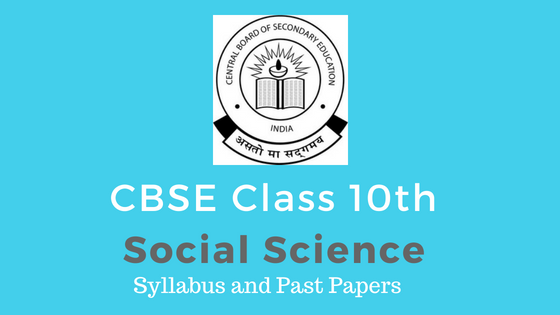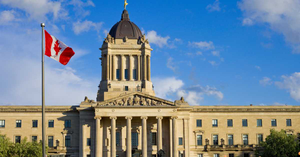CBSE Class X Social Science Syllabus and Course Structure 2024-25. Check out CBSE Class 10th Social Science Syllabus, CBSE Class 10th Social Science Previous year question papers, CBSE Class 10th Social Science Sample Papers. Check out CBSE Class 10th Syllabus and Past Papers of other CBSE Class 10th Course CBSE Class 10th Science Syllabus 2024-25 and Past Papers, CBSE Class 10th Mathematics Syllabus 2024-25 and Past Papers, CBSE Class 10th English Language And Literature Syllabus 2024-25 and Past Papers, CBSE Class 10th English Communicative Syllabus 2024-25 and Past Papers, or check out CBSE Class 10th Previous Year Question Papers and Sample Papers Solved. Continue to read for CBSE Class 10th Syllabus Social Science.
The Article covers following information related to CBSE Class 10th Social Science
- Section wise weightage
- Section wise Syllabus and learning objective
- Prescribed books
- Question Paper format
- List of locations for Map
Section Wise Weightage CBSE Class 10th Social Science 2024-25
Total duration of the exam of the exam will be 3 Hrs. Marks: 80
| Units | Marks | Percentage | |
| I | History – India and the Contemporary World – II | 18+2 | 25% |
| II | Geography – Contemporary India – II | 17+3 | 25% |
| III | Political Science – Democratic Politics II | 20 | 25% |
| IV | Economics – Understanding Economic Development | 20 | 25% |
| Total | 80 | 100% |
CBSE Class 10th Social Science Exam Paper Format and CBSE Class 10th Syllabus Social Science
Unit 1: India and the Contemporary World-II 60 Periods
| Section | Chapter | Periods |
| I Events and Process | 1. The Rise of Nationalism in EuropeThe French Revolution and the Idea of the Nation The Making of Nationalism in EuropeThe Age of Revolutions: 1830-1848The Making of Germany and ItalyVisualising the NationNationalism and Imperialism | 17 |
| I Events and Process | 2. Nationalism in IndiaThe First World War, Khilafat and Non-Cooperation Differing Strands within the MovementTowards Civil DisobedienceThe Sense of Collective Belonging | 17 |
| II Livelihoods, Economies and Societies | 3. The making of a Global WorldThe Pre-modern worldThe Nineteenth Century (1815-1914)The Inter war EconomyRebuilding a World Economy: The Post-War Era | 6 |
| II Livelihoods, Economies and Societies | 4. The Age of IndustrializationBefore the Industrial RevolutionHand Labour and Steam PowerIndustrialization in the ColoniesFactories Come UpThe Peculiarities of Industrial Growth | 6 |
| III Everyday Life, Culture and politics | 5. Print Culture and the Modern WorldThe First Printed BooksPrint Comes to EuropeThe Print Revolution and its ImpactThe Reading ManiaThe Nineteenth CenturyIndia and the World of PrintReligious Reform and Public DebatesNew Forms of PublicationPrint and Censorship· | 10 |
Unit 2: Contemporary India – II
Suggested number of period to cover this unit: 55 Periods
| Themes | Periods |
| 1. Resources and Development | 7 |
| 2 Forest and Wildlife Resources | 7 |
| 3. Water resourcesWater Scarcity and The Need for Water Conservation and Management Multi-Purpose River Projects and Integrated Water Resources Management Rainwater Harvesting | 7 |
| 4. AgricultureTypes of Farming – Primitive Subsistence, Intensive Subsistence, CommercialCropping Pattern – Major Crops, Food Crops other than Grains, Non Food Crops, Technological and Institutional Reforms Food Security (excluding impact of globalisation on agriculture | 10 |
| 5. Minerals and energy ResourcesWhat is a mineral?Mode of occurrence of Minerals – Where are these minerals found? Ferrous Minerals, Non-Ferrous Minerals, Non Metallic Minerals, Rock Minerals Conservation of MineralsEnergy Resources – Conventional Sources of Energy, Non-Conventional Sources of Energy Conservation of Energy Resources | 10 |
| 6. Manufacturing IndustriesImportance of Manufacturing – Industrial Location (excluding Industry Market Linkage), Agro based Industry (excluding Cotton Textiles, Jute Textiles, Sugar Industry), Mineral based Industries (excluding Iron Steel Industry, Cement Industry), Industrial Pollution and Environmental Degradation, Control of Environmental Degradation. | 10 |
| 7. Lifelines of National EconomyRoadways, Railways, Pipelines, Waterways, Major Seaports, Airways, Communication, International Trade, Tourism as a Trade | 2 |
Unit 3: Democratic Politics – II
Suggested number of periods to cover this unit: 50 Periods
| Themes | Periods |
| 1. Power-sharing 2. Federalism | 15 |
| 3. Gender, Religion and Caste | 12 |
| 4. Political Parties | 12 |
| 5. Outcomes of Democracy | 11 |
Unit 4: Understanding Economic Development
Suggested number of periods to cover this unit 50 Periods
| Themes | Periods |
| 1. Development | 12 |
| 2. Sectors of the Indian Economy | 12 |
| 3. Money and Credit | 12 |
| 4. Globalization and the Indian Economy | 8 |
Social Science Prescribed Books
- India and the Contemporary World-II (History) – Published by NCERT
- Contemporary India II (Geography) – Published by NCERT
- Democratic Politics II (Political Science) – Published by NCERT
- Understanding Economic Development – Published by NCERT
- Together Towards a Safer India – Part III, a textbook on Disaster Management – Published by CBSE
Class X Social Science Question Paper Format and Design
Weightage to Type of Questions
| Type of Questions | Question | Marks (80) | Percentage |
| 1 Mark MCQs (20×1) | 20 | 20 | 25% |
| 2 Marks Narrative Questions (4×2) | 4 | 8 | 10% |
| 3 Marks Narrative Questions (5×3) | 5 | 15 | 18.75% |
| 4 MARKS Case Study Questions (3×4) | 3 | 12 | 15% |
| 5 Mark Narrative Questions (4×5) | 4 | 20 | 25% |
| Map Map Pointing | – | 5 | 6.25% |
Weightage to Competency Levels
| S.No. | Typology of Questions | Total Marks | % Weightage |
| 1 | Remembering and Understanding: Exhibiting memory of previously learned material by recalling facts, terms, basic concepts, and answers; Demonstrating understanding of facts and ideas by organizing, translating, interpreting, giving descriptions and stating main ideas. | 24 | 30% |
| 2 | Applying: Solving problems to new situations by applying acquired knowledge, facts, techniques and rules in a different way. | 11 | 13.25% |
| 3 | Formulating, Analysing, Evaluating and Creating: Examining and breaking information into parts by identifying motives or causes; Making inferences and finding evidence to support generalizations; Presenting and defending opinions by making judgments about information, validity of ideas, or quality of work based on a set of criteria; Compiling information together in a different way by combining elements in a new pattern or proposing alternative solutions. | 40 | 50% |
| 6 | Map | 5 | 6.25% |
| Total | 80 | 100% |
Class X Social Science 2024-2025 : List Of Map Items For Social Science
History – Outline Political Map of India
| Nationalism in India – (1918 – 1930) | 1. Indian National Congress Sessions: Calcutta (Sep. 1920)Nagpur (Dec. 1920)Madras (1927)2. Important Centres of Indian National Movement : (Non-cooperation and Civil Disobedience Movement) Champaran (Bihar) – Movement of Indigo PlantersKheda (Gujrat) – Peasant SatyagrahAhmedabad (Gujarat) – Cotton Mill Workers Satyagraha3. Amritsar (Punjab) – Jallianwala Bagh Incident4. Dandi (Gujarat) – Civil Disobedience Movement |
GEOGRAPHY – Outline Political Map of India
| Resources and Development | Identification only: Major soil Types |
| Water Resources | Locating and Labelling – Dams Salal Bhakra Nangal Tehri Rana Pratap Sagar Sardar Sarovar Hirakud Nagarjuna Sagar Tuhgabhadra |
| Agriculture | Identification only Major areas of Rice and Wheat. Largest / Major producer states of Sugarcane; Tea; Coffee; Rubber; Cotton and Jute. |
| Mineral and Energy Resources | Identification onlyIron ore mines: Mayurbhanj, Durg, Bailadila, Bellary, KudremukhCoal mines: Raniganj, Bokaro, Talcher, NeyvaliOil Fields: Digboi, Naharkatia, Mumbai High, Bassien, Kalol, AnkaleshwarThermal: Namrup, Singrauli, Ramagundam Nuclear: Narora, Kakrapara, Tarapur, Kalpakkam |
| Manufacturing Industries | Locating and Labelling OnlyCotton Textile Industries: Mumbai, Indore, Surat, Kanpur, CoimbatoreIron and Steel Plants: Durgapur, Bokaro, Jamshedpur, Bhilai, SalemSoftware Technology Parks: Noida, Gandhinagar, Mumbai, Pune, Hyderabad, Bangalore, Chennai, Thiruvanantapuram |
| Lifelines of National Economy | Locating and LabellingMajor Ports: Kandla, Mumbai, Marmagao, New Mangalore, Kochi, Tuticorin, Chennai, Vishakhapatnam, Paradip, Haldia International Airports: Amritsar (Raja Sansi), Delhi (Indira Gandhi), Mumbai (Chhatrapati Shivaji), Chennai (Meenam Bakkam), Kolkata (Netaji Subhash Chandra Bose), Hyderabad (Rajiv Gandhi) |
Note: Items of Locating and Labelling may also be given for Identification.








Be the first one to comment on this story.